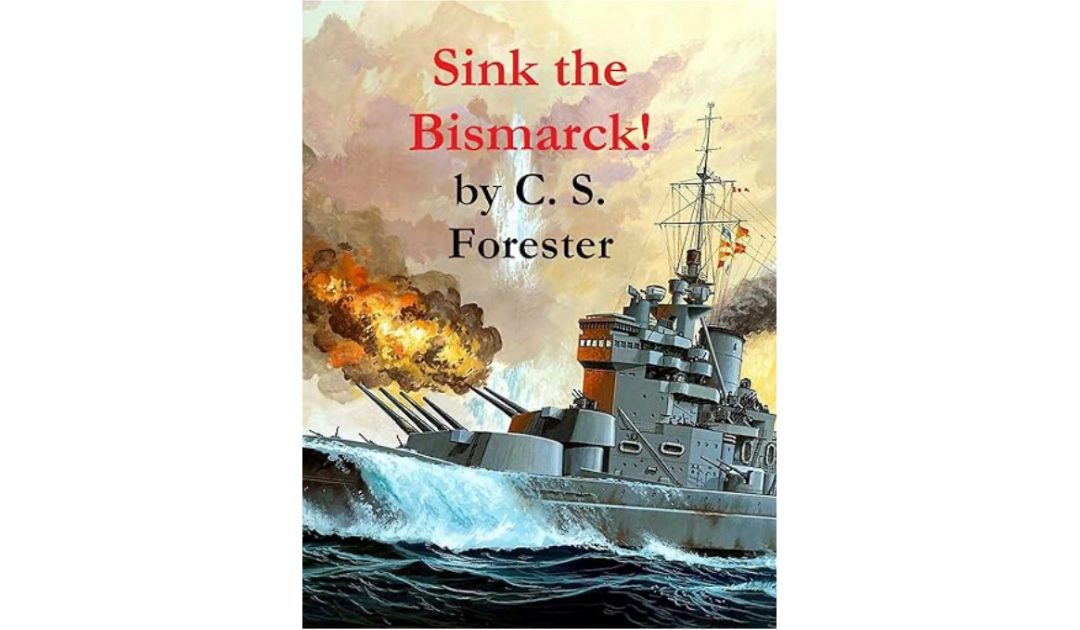On the 27th of May, 1941, the german battleship Bismarck was sunk in the North Atlantic. In the annals of naval history, few events have captured the imagination and highlighted the ferocious nature of sea warfare as dramatically as the sinking of the German battleship Bismarck. Its demise not only marked a critical turning point in the Battle of the Atlantic during World War II but also symbolised the triumph of determination and strategy over sheer brute force.
Launched in February 1939, the Bismarck was the pride of the German Kriegsmarine. With a displacement of over 50,000 tonnes when fully loaded, it was among the largest and most powerful battleships of its time. It boasted formidable armament, including eight 15-inch guns, which were capable of inflicting devastating damage. The ship’s design emphasised speed, protection, and firepower, making it a formidable foe in the North Atlantic.
Bismarck’s mission was clear: to break into the Atlantic shipping lanes and wreak havoc on the vital convoys that Britain relied upon for survival. Her maiden operational voyage, in May 1941, alongside the heavy cruiser Prinz Eugen, was intended to do exactly that.
The British Admiralty was well aware of the threat posed by the Bismarck. The pursuit began in earnest when the Bismarck, along with Prinz Eugen, was spotted off the coast of Norway. The first major engagement took place in the Denmark Strait on the 24th of May 1941, when Bismarck encountered HMS Hood and HMS Prince of Wales.
The encounter was catastrophic for the British. The Hood, pride of the Royal Navy, was struck by Bismarck’s shells, causing a massive explosion that sunk it within minutes. Only three of its crew survived. The Prince of Wales was damaged and forced to retreat. The loss of Hood galvanised the British public and navy, fuelling a relentless pursuit of the Bismarck.
Despite the Bismarck’s prowess, fate and strategy were not on her side. After the battle in the Denmark Strait, Bismarck attempted to head for the safety of German-occupied France. However, a critical error occurred when the ship’s fuel reserves were compromised during the skirmish, reducing her range and speed.
In a stroke of fortune for the British, Bismarck was sighted by a reconnaissance aircraft from the Royal Navy carrier HMS Ark Royal. This discovery enabled British forces to launch a concerted attack. On the 26th of May, 1941, Swordfish biplanes from Ark Royal launched a torpedo assault. One torpedo struck Bismarck’s rudder, jamming it and rendering the ship virtually helpless in the water.
Now a sitting target, the Bismarck faced the full might of the British Home Fleet. On the morning of the 27th of May, battleships HMS King George V and HMS Rodney engaged the Bismarck in a brutal final battle. Despite fierce resistance, the overwhelming firepower of the British ships took its toll. By late morning, the Bismarck was a burning wreck.
In the final moments, as the British ships circled, Bismarck’s crew scuttled her to prevent capture. At 10:39 AM, the once-mighty battleship slipped beneath the waves, taking with her more than 2,000 of her crew.
The sinking of the Bismarck was a significant strategic victory for the Allies. It demonstrated the importance of air power in naval engagements and marked a shift in the balance of naval strength. The relentless pursuit and ultimate destruction of Bismarck also served as a morale booster for the Allied forces, proving that even the most formidable adversaries could be overcome.
In retrospect, the Bismarck’s mission was doomed by a series of tactical misjudgments and the effective coordination of British forces. The ship remains a symbol of naval warfare’s intensity and the harsh realities of war at sea. I recall that in C.S. Forrester’s book, Sink the Bismarck!, Bismarck’s captain, Otto Ernst Lindemann, had his crew at actions stations for an extraordinarily long time before the final encounter. It can’t help that when you do go into battle you can barely keep your eyes open.
Today, the wreck of the Bismarck lies under the North Atlantic, a silent testament to a bygone era of naval might. Its story continues to captivate historians and enthusiasts, serving as a poignant reminder of the strategic and human dimensions of war.

